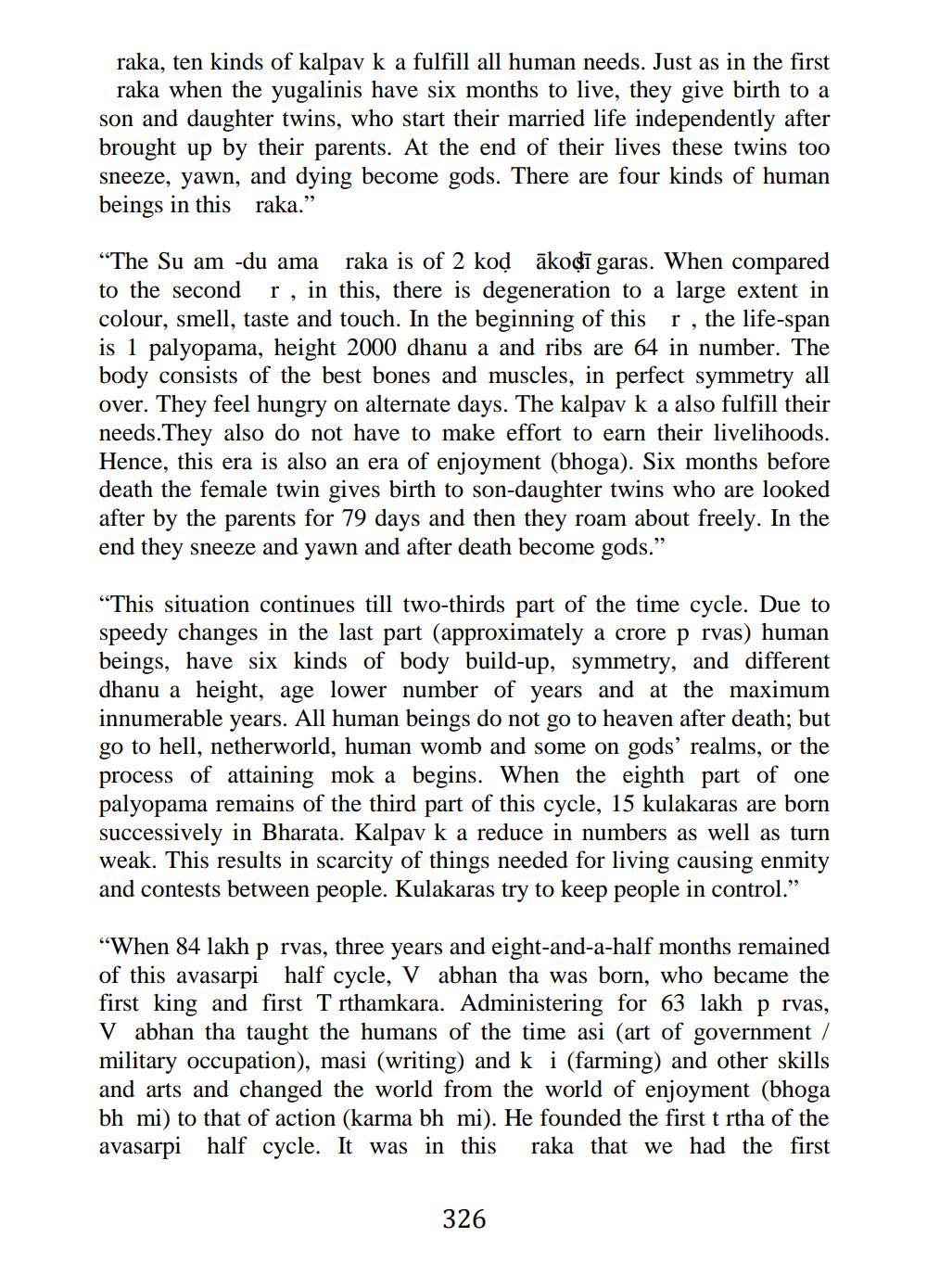________________
raka, ten kinds of kalpay k a fulfill all human needs. Just as in the first
raka when the yugalinis have six months to live, they give birth to a son and daughter twins, who start their married life independently after brought up by their parents. At the end of their lives these twins too sneeze, yawn, and dying become gods. There are four kinds of human beings in this raka.”
“The Su am -du ama raka is of 2 kod ākoçī garas. When compared to the second r , in this, there is degeneration to a large extent in colour, smell, taste and touch. In the beginning of this r , the life-span is 1 palyopama, height 2000 dhanu a and ribs are 64 in number. The body consists of the best bones and muscles, in perfect symmetry all over. They feel hungry on alternate days. The kalpav k a also fulfill their needs.They also do not have to make effort to earn their livelihoods. Hence, this era is also an era of enjoyment (bhoga). Six months before death the female twin gives birth to son-daughter twins who are looked after by the parents for 79 days and then they roam about freely. In the end they sneeze and yawn and after death become gods."
“This situation continues till two-thirds part of the time cycle. Due to speedy changes in the last part (approximately a crore p rvas) human beings, have six kinds of body build-up, symmetry, and different dhanu a height, age lower number of years and at the maximum innumerable years. All human beings do not go to heaven after death; but go to hell, netherworld, human womb and some on gods' realms, or the process of attaining mok a begins. When the eighth part of one palyopama remains of the third part of this cycle, 15 kulakaras are born successively in Bharata. Kalpav k a reduce in numbers as well as turn weak. This results in scarcity of things needed for living causing enmity and contests between people. Kulakaras try to keep people in control.”
"When 84 lakh p rvas, three years and eight-and-a-half months remained of this avasarpi half cycle, Vabhan tha was born, who became the first king and first T rthamkara. Administering for 63 lakh p rvas, V abhan tha taught the humans of the time asi (art of government / military occupation), masi (writing) and k i (farming) and other skills and arts and changed the world from the world of enjoyment (bhoga bh mi) to that of action (karma bh mi). He founded the first t rtha of the avasarpi half cycle. It was in this raka that we had the first
326




